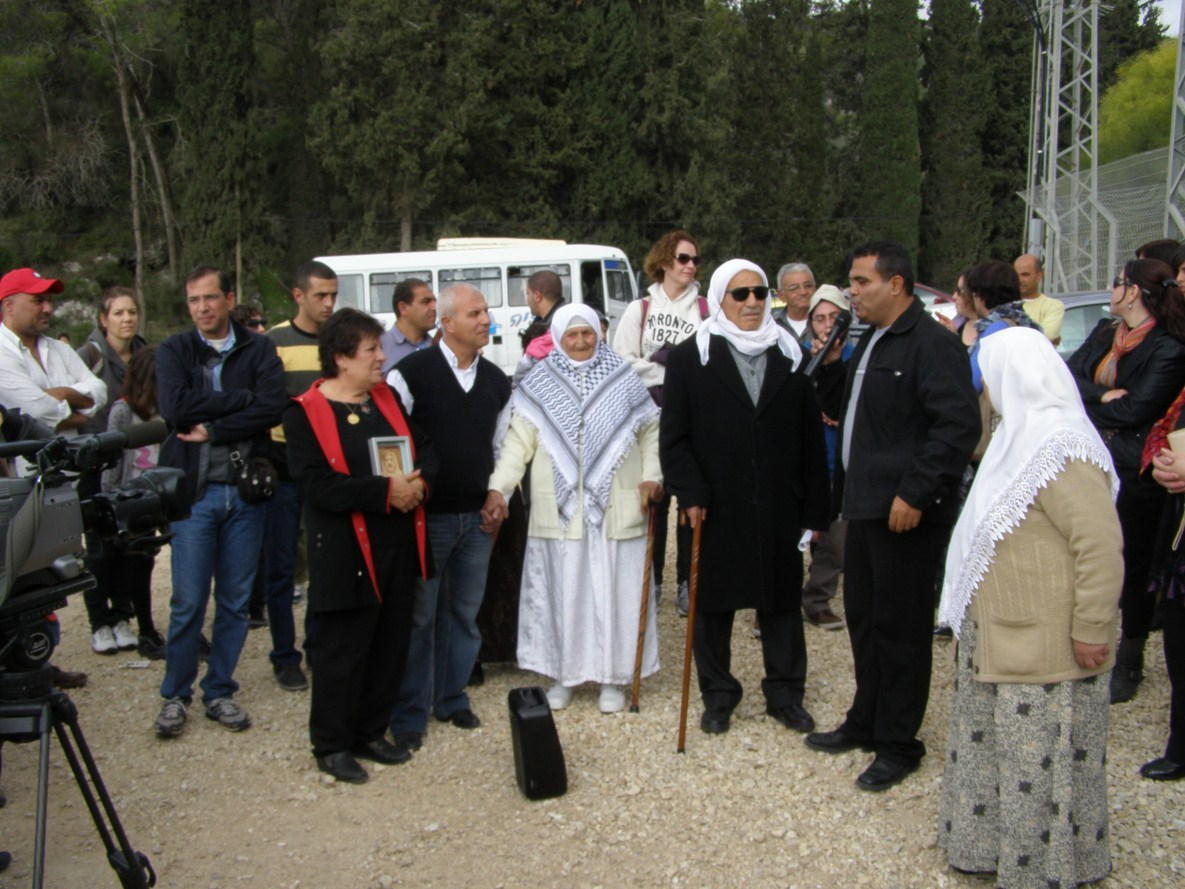This tour also took us back to the future. In the plaza of the Catholic Church at the center of their village, a group of youngsters presented a plan for the village of Ma'lul as it will be rebuilt for its 7000 refugees. On the map, they suggested rebuilding the village center in its old form and return the houses to their owners. They also suggested building new residential neighborhoods on the opposite hill, with proper infrastructures, community facilities, an industrial park and sports grounds. "It is a dream but it can come true", they said. These youngsters have completed a three-session workshop on planning for Return, facilitated by Zochrot. The plan they presented was the outcome. This was the tour's last stop, but in another sense this was also the first stop on an imaginary tour of a realizable future.
About 130 people toured the ruins of Ma'lul, in the Lower Galilee. Most of them were refugees who now live not far from there, in the village of Yaffa (near Nazareth) and the city of Nazareth. They had learned from the elders about the village life that was cut short with its occupation by the Israeli military in July 1948. They also learned, from the younger generation, about a possible life after the return of its inhabitants and their descendants.
The size of the diverse crowd was impressive, but it was even more impressive to see the enthusiasm and excitement of the village refugees, both young and old. Seven older persons told about their pre-Nakba village. The youngsters acted as ushers, organizers and hosts. Several second-generation refugees shared some of their knowledge and the Ma'lul Heritage Organization provided information about its ongoing struggle with Israeli authorities.
The tour started next to 'Ein al-Balad, the village spring. The entire residential area of Ma'lul and a large portion of its agricultural lands became part of the Jewish National Fund's Kfar Hahoresh Forest. We walked up a broad lane towards the village center. Halfway there, we stumbled across piles of stones half hidden among the planted trees. These were the village's first houses. On this spot, we placed a sign with the erased village's name. The State of Israel destroyed all of the Palestinian inhabitant's houses right after their expulsion so that they would have nowhere to return to.
To the left lay the Muslim Graveyard – open and accessible to anyone. Some of the visitors prayed near the graves. Warda 'Ali al-Salih sat for a long time near her brother's grave. As we proceeded, we passed by the Christian Graveyard, also to the left. This graveyard is off limits to everyone. Ma'lul's Christian refugees are not allowed to visit their relatives' graves because the graveyard is now located inside a large military camp built right next to the village houses. Salwa Qubti spoke bitterly about her failed attempts to reach her grandfather's grave. In 1948, Jewish militiamen ambushed a Palestinian bus on the way from Haifa to Nazareth, and shot two of its passengers, including Ms. Kubti's father, Faris Salim. We posted another sign here explaining about the inaccessible Christian Graveyard.
More piles of ruins accompanied us on both sides of the lane as we kept walking. To the right, we could see the village mosque, a partly demolished square building. We posted a sign with the word Mosque at the entrance. In recent years, Ma'lul inhabitants have been campaigning for the Israeli authorities' approval to renovate the mosque, hitherto without success. At each stop, another refugee shares some of his or her knowledge.
Two churches stand on top of the hill. One is the unkempt Greek Orthodox Church. The other is the Catholic Church that the villagers managed to clean and renovate in 2006 after years of neglect and sacrilege. Since its renovation, the villagers have been permitted to pray there one a year, on Easter.
On this joyous occasion, Ma'lul's refugees opened the church for us and placed chairs to seat all the guests at the plaza. Right at the entrance, on a heightened stone shelf, I sat with the oldest refugee, Jad Saba Salim, to hear the rest of the story. "The Jews captured the mountain opposite us. They shot at us from there and killed several villagers. We had no firearms. There were some troops from the Arab Liberation Army, but they didn't do anything either. We left the village in fear. From their mountain outpost, the Jews could snipe at us one after the other. We were afraid to leave the houses. We couldn't even get water from the spring. We could only get out under cover of darkness. Life in the village became impossible. Many went to stay with relatives in nearby villages. We thought we would return after the war was over, but they demolished our houses. It was then that I realized that there had never been any intention of letting us return".
After the story of the past was told, the youngsters rose and presented their vision of Ma'lul's future.
To read more in Ma'lul booklet click her
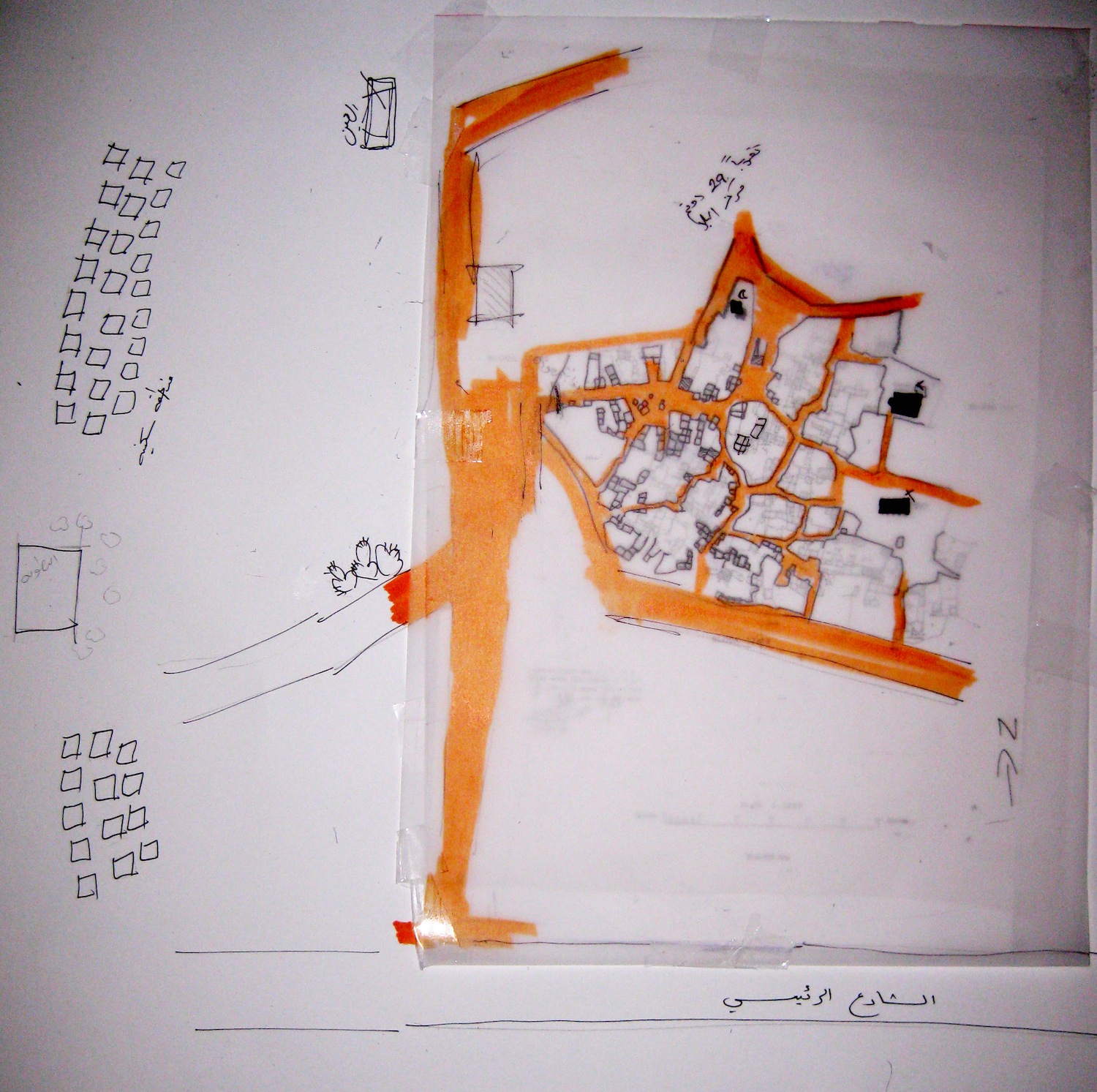
معلول بعد العوده / מעלול אחרי השיבה
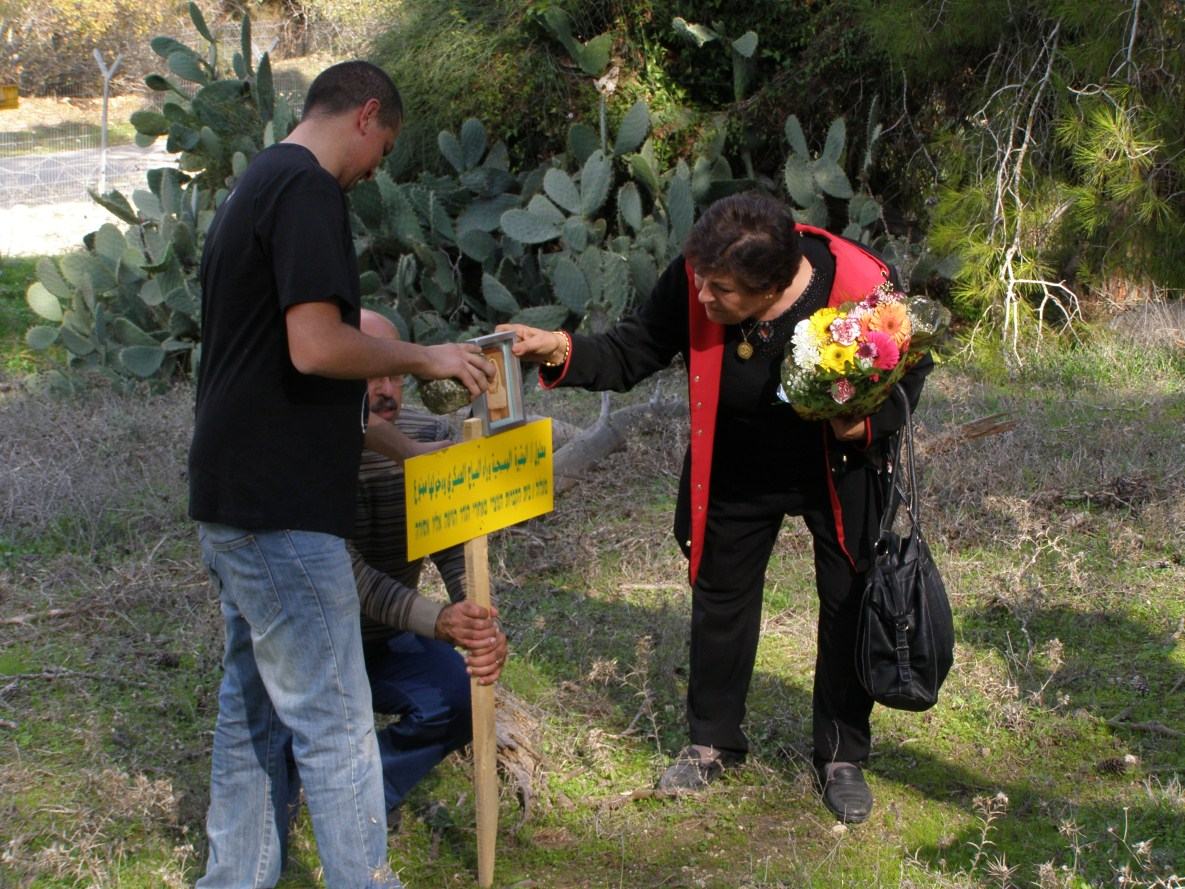
جولة في قرية معلول / סיור בכפר הפלסטיני מעלול
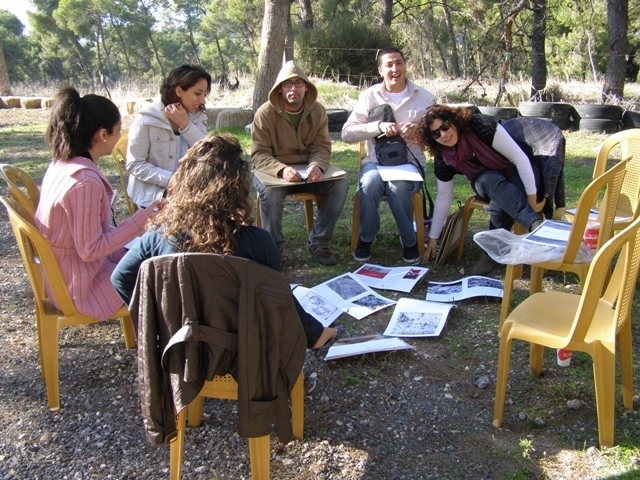
شباب معلول / צעירות וצעירים מהכפר מעלול
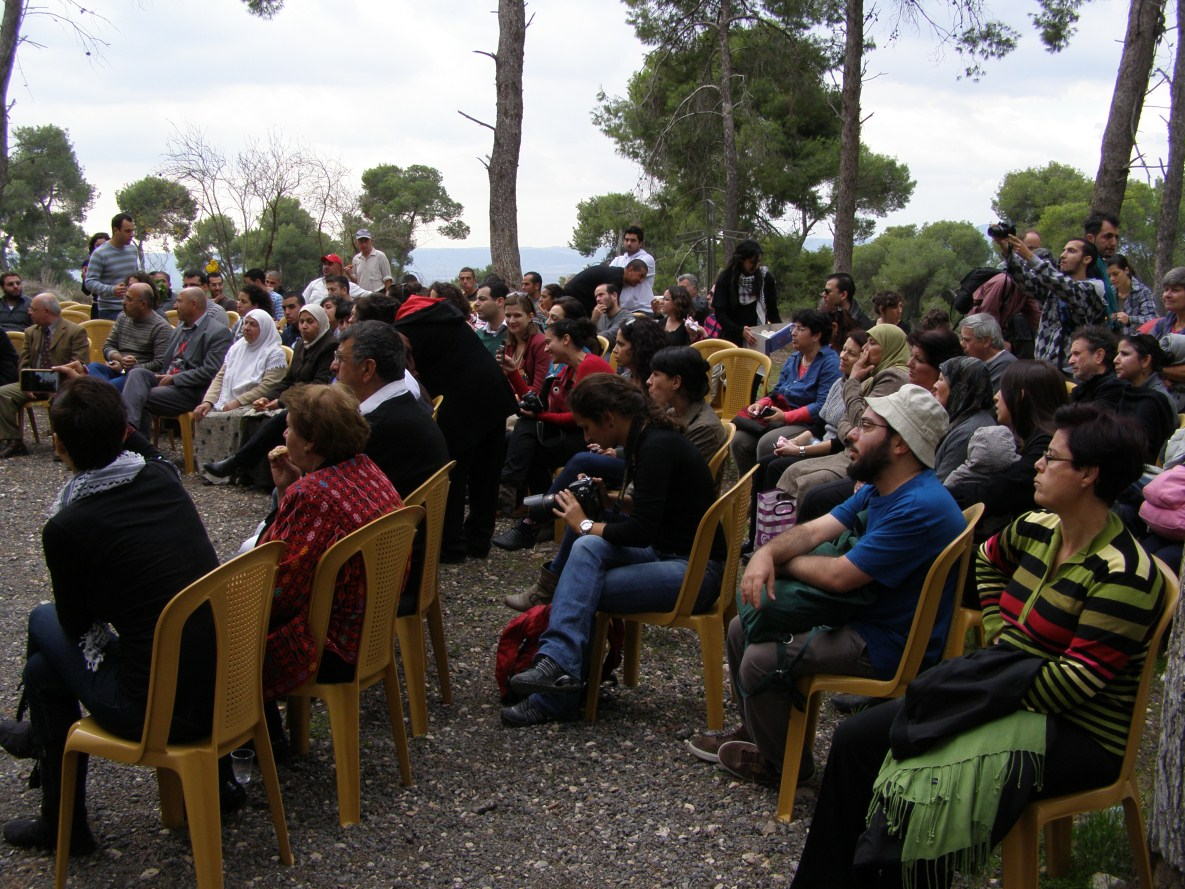
جولة في قرية معلول / סיור בכפר הפלסטיני מעלול
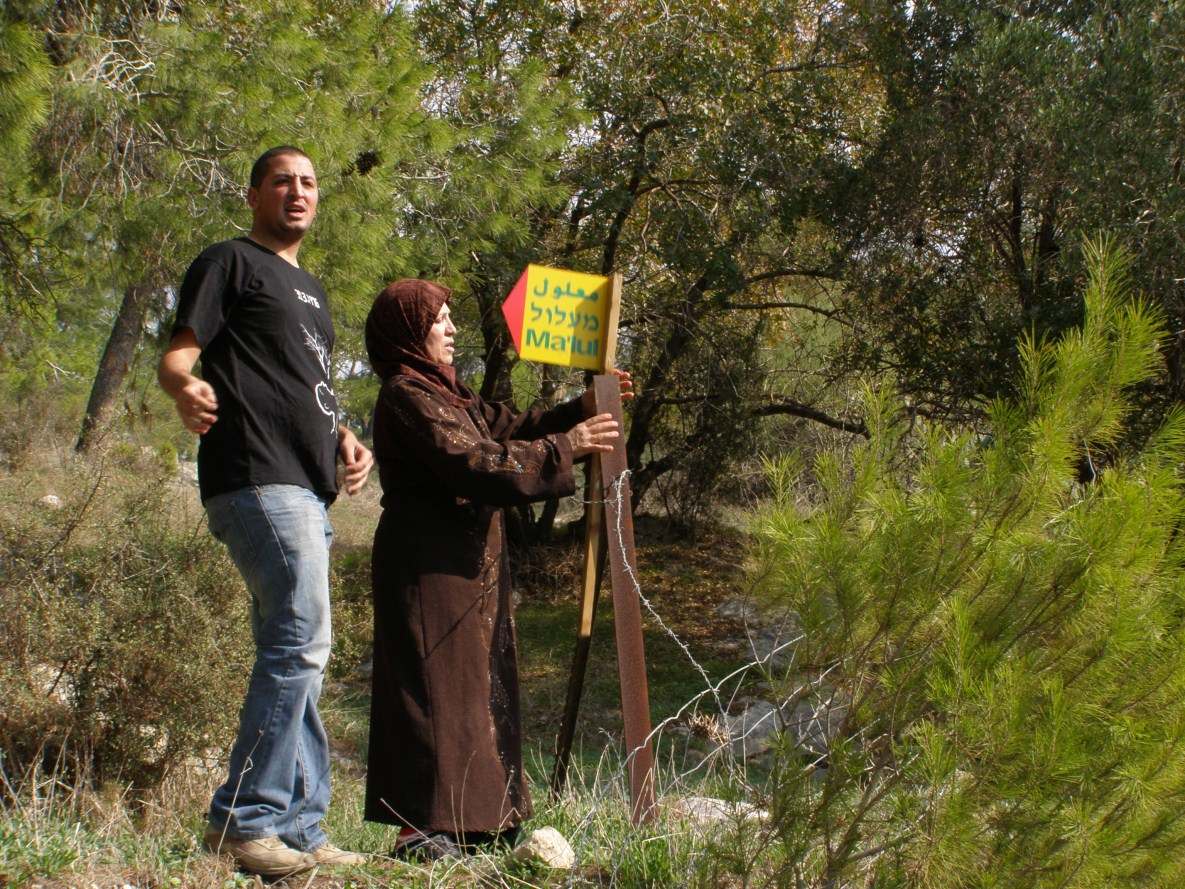
جولة في قرية معلول / סיור בכפר הפלסטיני מעלול
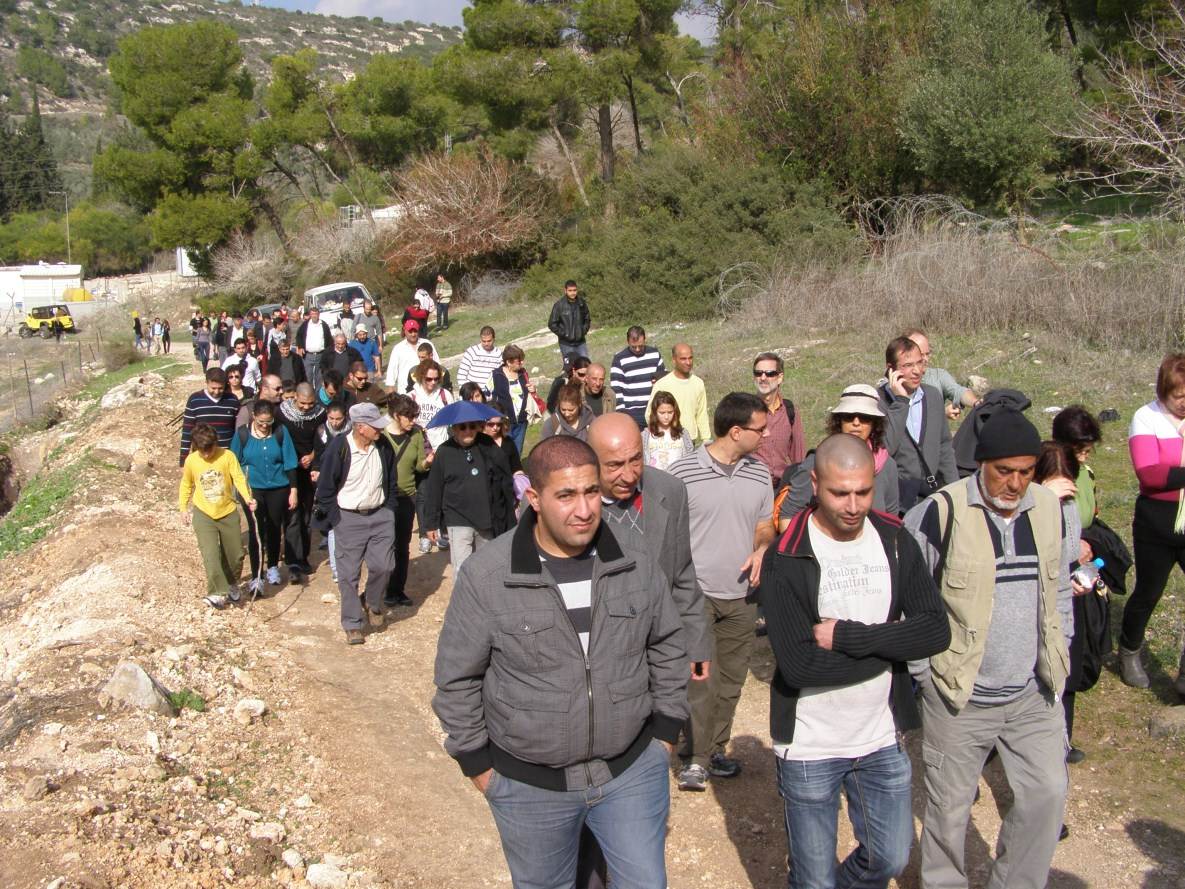
جولة في قرية معلول / סיור בכפר הפלסטיני מעלול
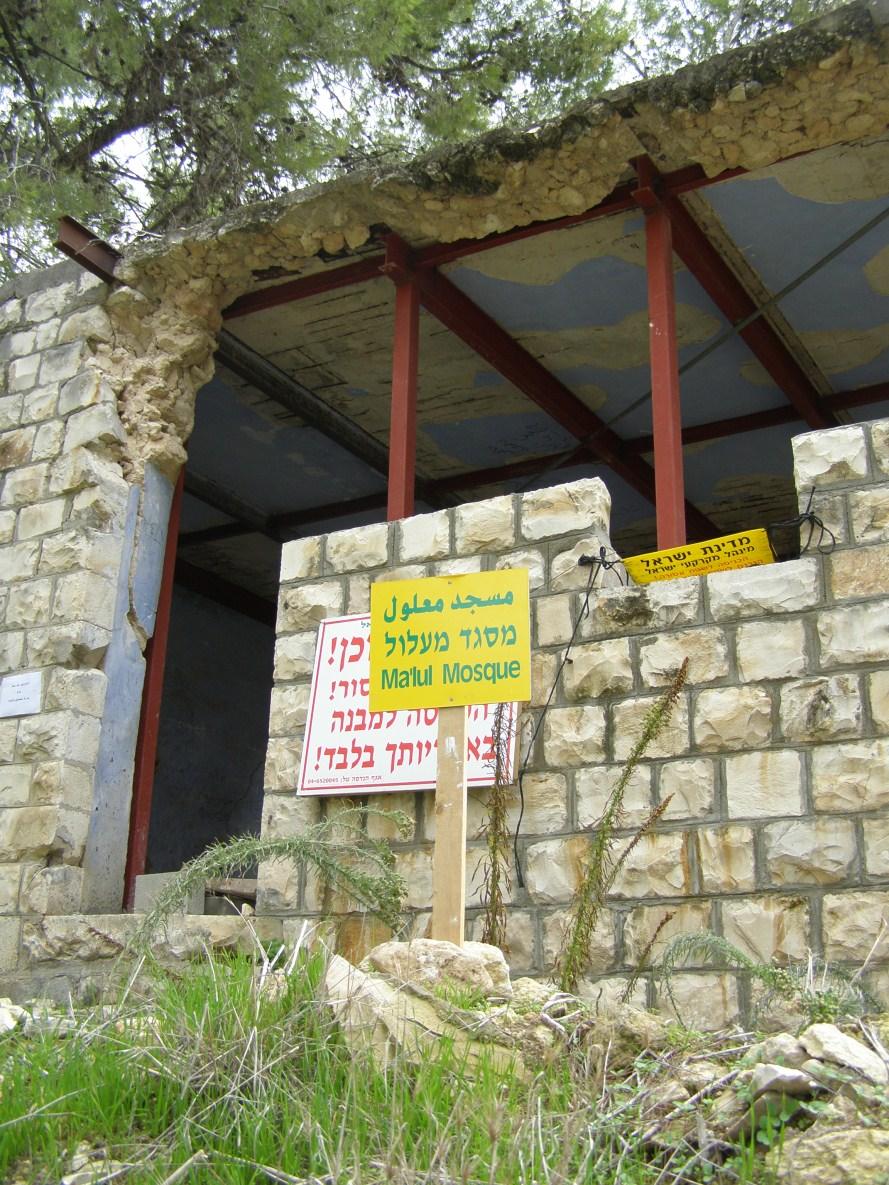
جولة في قرية معلول / סיור בכפר הפלסטיני מעלול
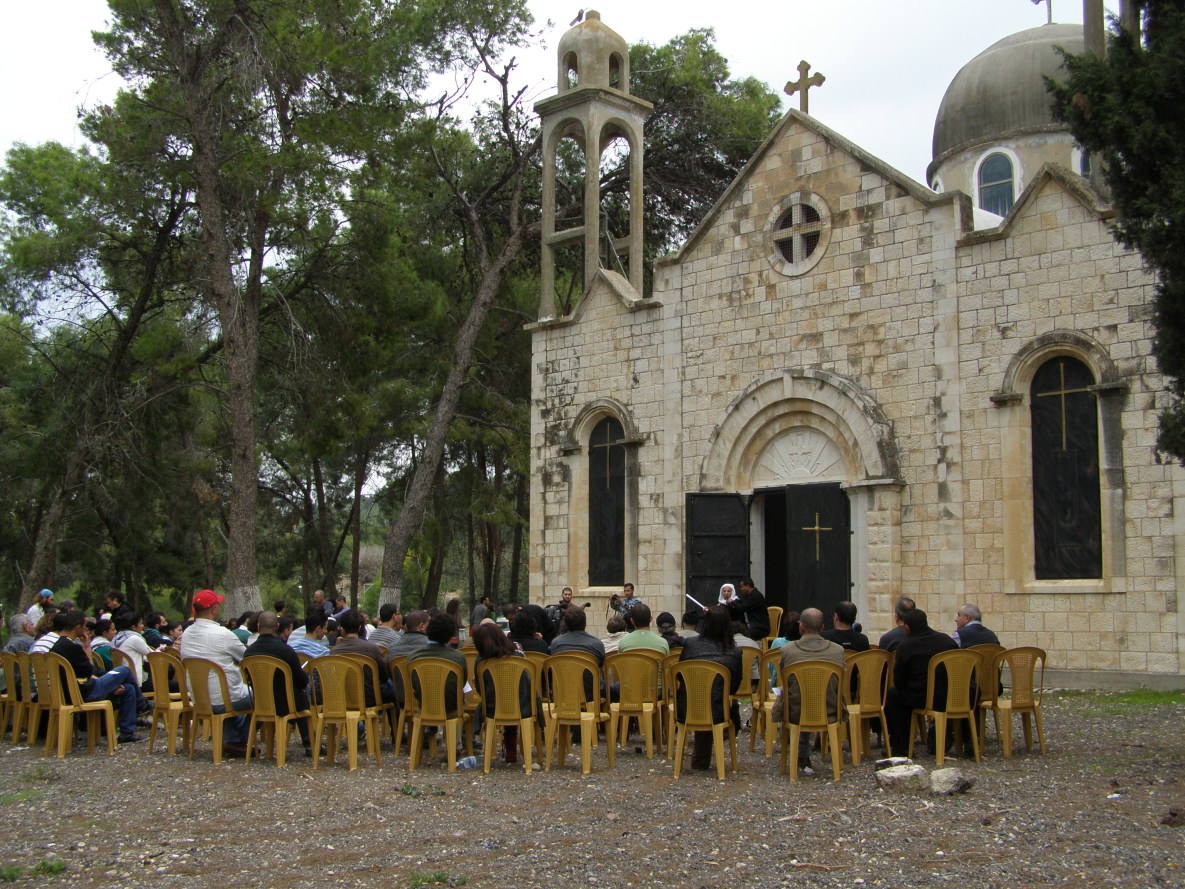
جولة في قرية معلول / סיור בכפר הפלסטיני מעלול



